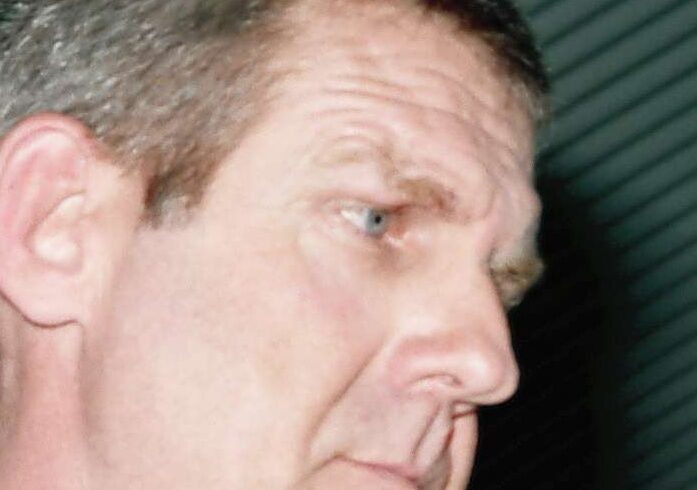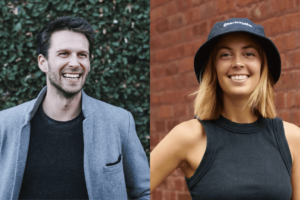
Bradley John Murdoch always maintained he did not murder Peter Falconio, despite a Supreme Court jury finding his guilt proven beyond a reasonable doubt.
His recalcitrance spawned endless conspiracy theories about the case, further fuelled by unfair criticism of survivor Joanne Lees, whose perceived lack of candour in public clouded her in suspicion.
Then there was the matter of Mr Falconio’s body, which has still never been found.
In the end it was Ms Lees’ testimony and DNA evidence that sealed Murdoch’s fate, despite some controversy in the way it was obtained by police and question marks over her ability to identify the killer.
Following the seven-week trial and guilty verdict, Murdoch lost an appeal in the Northern Territory Supreme Court and was later refused special leave to appeal again in the High Court, putting an end to his legal options.
In the wake of his death, 24 years on from the outback murder, the ABC has looked back at the evidence that put Murdoch behind bars for life.
Murdoch was serving a life prison sentence for the murder of Peter Falconio near the remote Northern Territory town of Barrow Creek on July 14, 2001. (AAP)
Bradley Murdoch’s murder trial
In sentencing Murdoch to life in prison in 2005, Chief Justice Brian Martin described the way he conducted his defence as “an aggravating factor for Ms Lees and the family of Peter Falconio”.
Chief Justice Martin said the killer had tried to “to embarrass Ms Lees by endeavouring to cast a shadow over her reputation”.
“At trial, in the face of a powerful Crown case, you endeavoured to darken that shadow to the point of suggesting to the jury that not only was Ms Lees an unreliable witness, but she was not telling the truth about the disappearance of Mr Falconio,” he said.
Brian Martin said Peter Falconio and Joanne Lees were on “the trip of a lifetime” in Australia when Bradley John Murdoch “destroyed not only their plans, but the life of Peter Falconio”. (ABC News)
“You pursued the idea that Mr Falconio is still alive and the conduct of your defence was such as to convey the clear innuendo that Ms Lees was implicated in Mr Falconio’s disappearance.
“By their verdicts, the jury rejected those assertions and suggestions. I, too, reject those suggestions.”
Chief Justice Martin also joined the jury in rejecting Murdoch’s claim police had “deliberately fabricated evidence”.
The DNA evidence
In unchallenged evidence at the trial, forensic scientist Carmen Eckhoff concluded a bloodstain on the back of Ms Lees’ shirt was “at least 150 quadrillion times” more likely to be Murdoch’s than anyone else’s.
Instead, Murdoch argued in his appeal it may have been transferred at a Red Rooster outlet in Alice Springs both he and Ms Lees visited prior to the kidnapping, possibly from his blood having been left on a seat or doorframe.
A court sketch of Bradley Murdoch during his murder trial in 2005. (AAP)
But the three Court of Appeal justices dismissed that suggestion as “fanciful”, saying Murdoch’s own evidence was that he went directly to the chicken shop after driving for hours and there was no suggestion he was bleeding.
“The evidence of Ms Eckhoff was that the blood was wet at the time it came into contact with the T-shirt and that it was smudged,” they said.
“The location of the bloodstain on the shirt is such that the suggestion of it being placed by [Murdoch] on a door or a piece of furniture and then transferred while still wet onto the rear of Ms Lees’ shirt is unreal.”
Carmen Eckhoff told the court Bradley John Murdoch’s blood was wet when it came into contact with Joanne Lees’ shirt. (AAP: Rod McGuirk)
The appeal judges noted a “conflict” between expert witnesses about the technique used to identify other DNA, including on the improvised cable-tie handcuffs used to restrain Ms Lees, which one expert described as “pushing science to the limit”.
But the court said while that witness’s evidence was not “compelling”, it was also irrelevant as the shirt evidence was sufficient “to find beyond reasonable doubt that [Murdoch] was the assailant”.
Identification of Murdoch as the killer
Murdoch also argued that Ms Lees’ identification of him via an image published online, a photo line-up and then from the dock was “tainted” and unreliable, but the appeal court also rejected these claims.
The judges described Ms Lees’ evidence about the online photo as “compelling” and “both spontaneous and unequivocal”, while she was able to again “positively and without difficulty” identify Murdoch from the photo board weeks later.
Bradley Murdoch’s vehicle in a sketch by an artist with the help of Joanne Lees. (AAP: Paul Benjafield)
“We regard the identification by Ms Lees of [Murdoch] as the assailant as powerful evidence in support of the Crown case,” they wrote.
Despite upholding a single appeal ground, rejecting facial and body mapping evidence presented to the jury, the judges upheld the guilty verdict.
“The core issue in this case was the identity of the assailant,” they said.
“In our opinion the presence of the blood of [Murdoch] upon the T-shirt of Ms Lees establishes beyond reasonable doubt the presence of [Murdoch] at the time Ms Lees was attacked just north of Barrow Creek.
NT Police Assistant Commissioner John Daulby holding a photo of Joanne Lees’ bloodied elbow as proof of her ordeal in the desert. (AAP: Rod McGuirk)
“The case against [Murdoch] becomes overwhelming when the evidence of the identification of [Murdoch] as the assailant by Ms Lees is taken into account.”
What do the experts say now?
University of Southern Queensland law professor Andrew Hemming included Murdoch’s trial in his book Did They Do It?.
He said his research left him with zero doubt as to his guilt, and “a fair degree of contempt” for conspiracy theories.
“The notion that Joanne Lees was somehow involved in an insurance conspiracy is just absolutely fantastical, given the state that she was found in by the truck drivers, the physical injuries that she’d suffered,” he said.
When asked if there was any chance Bradley Murdoch was innocent, Andrew Hemming replied “none whatsoever”. (ABC News: Aisling Brennan)
Dr Hemming said he had been impressed by Ms Lees’ evidence when Murdoch’s barrister challenged her account that she had been able to move her shackled hands from behind her back during the kidnapping.
Killer’s death presents ‘opportunity’ to find Falconio’s remains
“Chief Justice Martin said, ‘Well you’ve challenged the credibility of the witness, so I think we should give her the opportunity’,” he said.
“So Joanne’s hands were tied behind her back with a necktie and in front of the whole court, without any hesitation, she just stepped through it.
“I just think she’s a very brave woman and she deserves a lot more credit than she’s ever been given — and the jury obviously believed her 100 per cent.”
Following Murdoch’s death this week, former chief investigator on the case Colleen Gwynne said she understood why people were “really uncomfortable when there is no body”.
“People say ‘no body, no crime’,” she said.
Colleen Gwynne says anyone who still doubts the jury’s verdict should “come and talk to me”. (Supplied)
But Ms Gwynne said there was “a mountain of forensic evidence”, along with the fact Murdoch had Ms Lee’s belongings in his possession when he was caught.
For anyone who was still “not a believer”, she encouraged them to “read the transcripts” from the lengthy trial.
“And if you still don’t believe, then come and talk to me,” she said.





